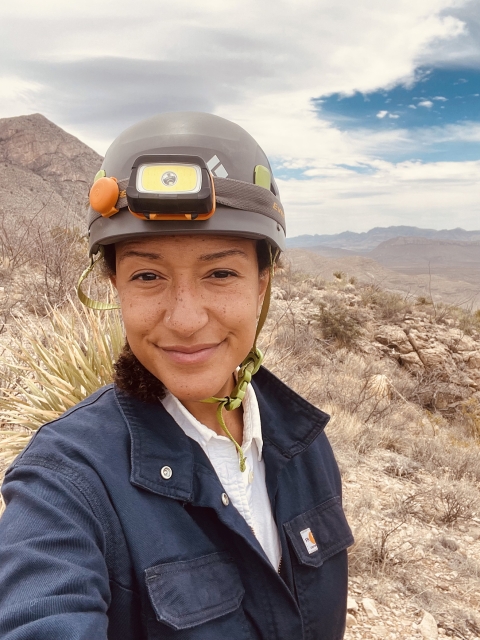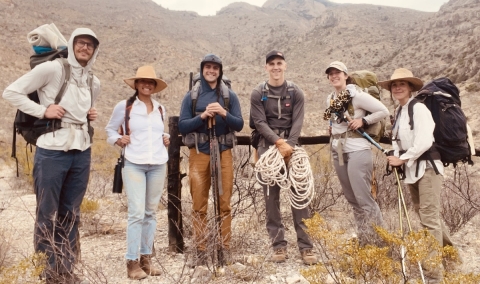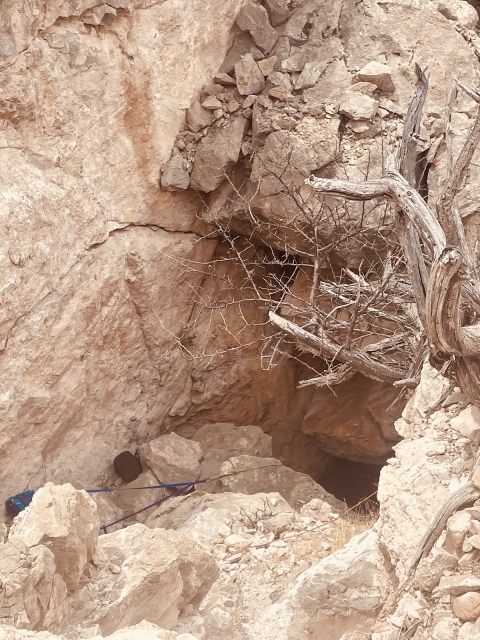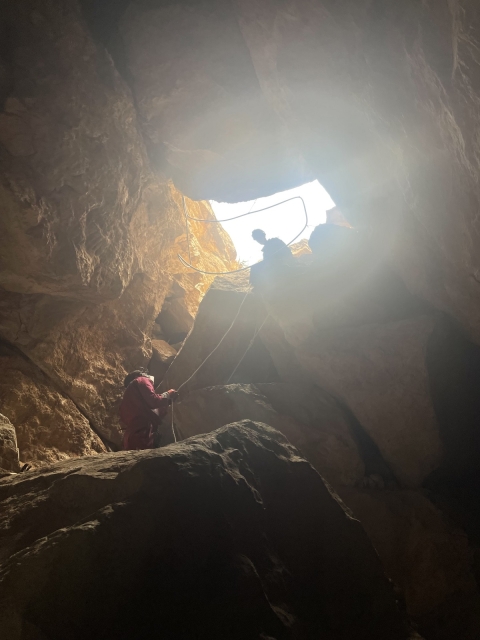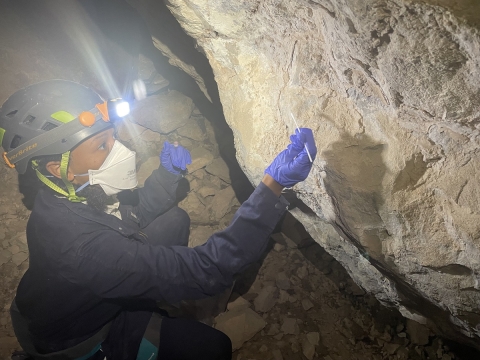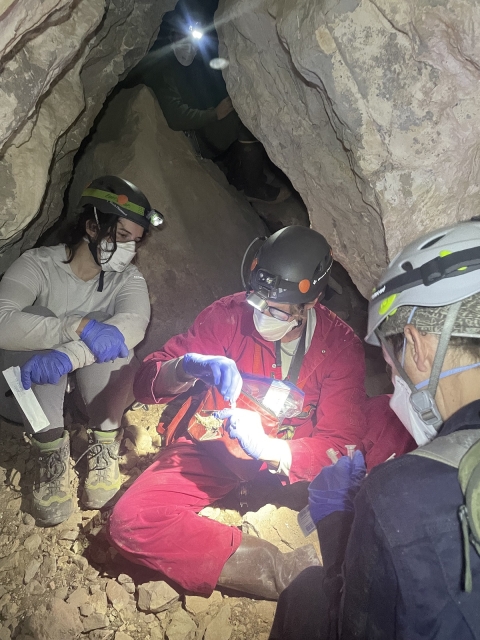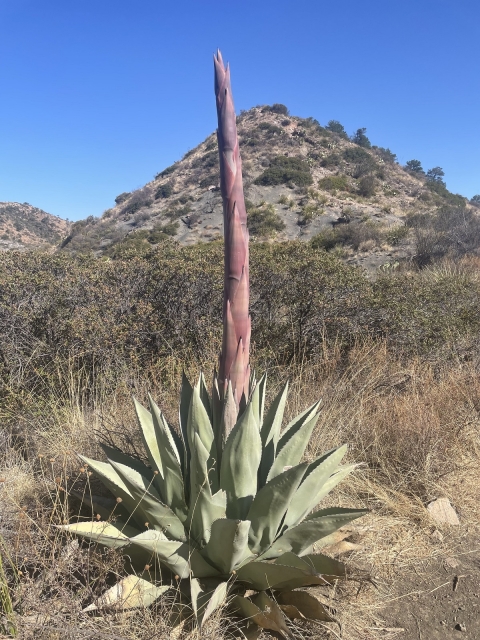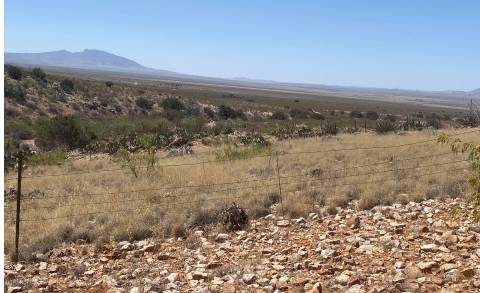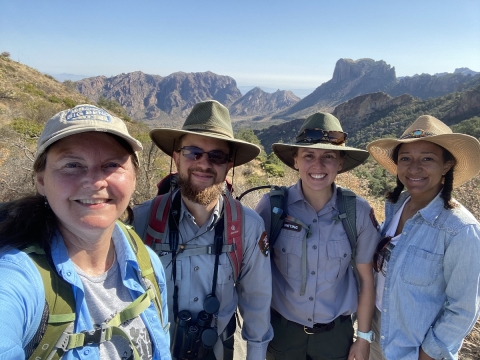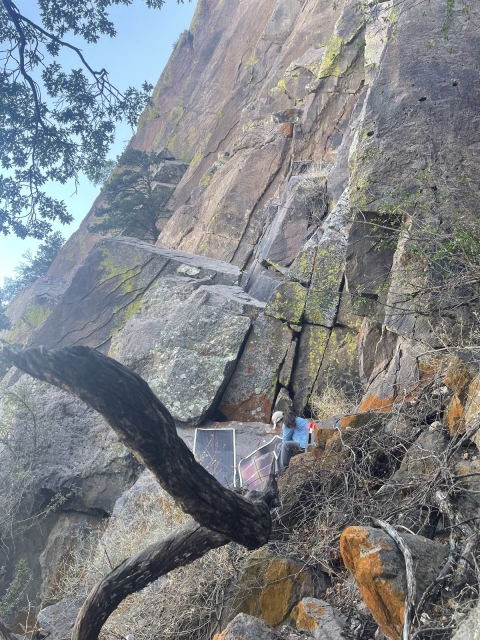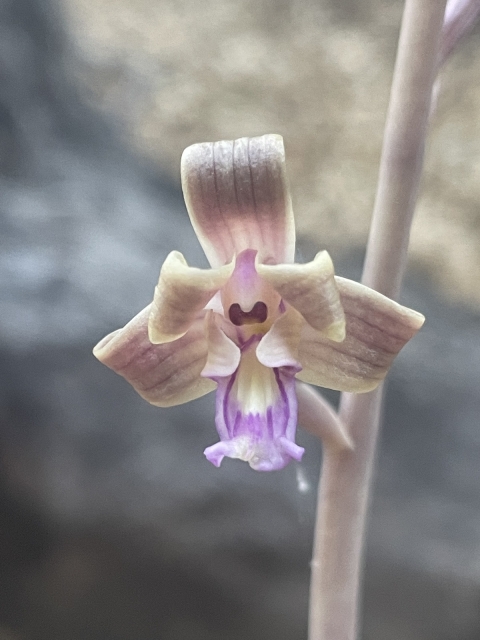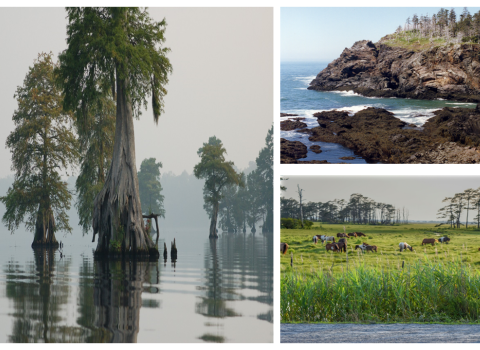Fish and Wildlife biologists with the U.S. Fish and Wildlife Service’s Ecological Services Program serve in a variety of roles to help protect federally threatened and endangered species and the habitats they depend upon.
One important title a biologist can hold in listing and recovery is known as the “species lead,” who serves as the Service’s point-person for a listed, proposed or candidate species. This includes planning and conducting Species Status Assessments (SSA), which serves as the single source for species’ biological information needed for all Endangered Species Act (ESA) decisions, and drafting and implementing Recovery Plans to help improve the status of listed species.
But being a species lead isn’t just an office job. Just ask Dr. Jade Florence, a fish and wildlife biologist with the Service’s Austin Ecological Services Field Office.
Florence serves as the species lead for the endangered Mexican long-nosed bat and the candidate Chisos coral-root, which are found in remote and hard-to-access locations in the rugged Southwest.
She recently took a trip to Southern New Mexico and West Texas to learn more about these species and meet the partners who are working to protect them. Since most of us aren’t qualified to rappel into remote caves (and let’s be honest, we might not have the guts to do it either) she shared photos from her trip so that we can see what she encountered.
“Leptonycteris nivalis, the Mexican long-nosed bat, is a migratory species that mostly occurs in Mexico, but there are two main roosts in the U.S. The species mates in Mexico and then the females migrate northward, chasing agave as it blooms further and further north. Once they get up to Texas and New Mexico, they'll locate a roost, give birth and ween their young, and when they’re old enough, they all fly back south. So, it's pretty critical that they have both roosts and food sources in the northern part of their range.
I went to New Mexico to visit one of the post-maternity roosts and then to West Texas to visit a maternity roost in Big Bend National Park."
“This is the crew that I worked with in New Mexico: from left, Jackson Bain with Bat Conservation International, (self), Ethan Sandoval with Bat Conservation International, Cody Howard with Bureau of Land Management, Mallory Davies with Colorado State University and Rachel Burke with Bureau of Land Management."
“The first roost we visited is Big Hatchet roost, which has not been entered in 15 years. One interesting thing about it is that it’s documented as a main roost, but data on the presence of Mexican long-nosed bats is lacking. Colorado State University researcher Mallory Davies’ research can put us in a position where we can re-confirm their presence and get better data.”
“This is inside the cave, looking up at the entrance to the Big Hatchet Mountain roost. Ethan Sandoval and Jackson Bain with Bat Conservation International are a part of the subterranean team, so they fixed up a rope system for us to get into the cave. We put on bodysuits, shoes, harnesses, helmets, and our headlamps at the surface and then rappelled down into the cave.
The upper part of this cave is where Davies does research. She lays out a tarp near the entrance of the cave during long-nosed bat occupancy and checks it each week for guano. She collects the guano samples to study the bat’s diet throughout the season and use genetic analysis to confirm the presence of Mexican long-nosed bats. She hasn’t been getting a lot of guano on her tarp, so the thought is that maybe they are exiting from another part of the cave.”
“Once inside, we also swabbed for white-nose syndrome, which is a contagious fungus that affects hibernating bats. The way that we figured out how or where to swab was that bats will actually get ectoparasites that they’ll rub on the rock to get off.”
“We also found this – it’s a little Leptonycteris spp. It's in the same genus as the Mexican long-nosed bat, but we think it's probably a different species. There are two closely related bats, there’s Leptonycteris nivalis, the Mexican long-nosed bat, and Leptonycteris yerbabuenae, the closely related lesser long-nosed bat. We swabbed and then also bagged it so that they submit it to a museum collection and confirm the species.
We also identified a lower room where it looks like the bats are roosting. We don't know if anyone has ever been into that room since the last official cave expedition in 2007. And it looks like they're coming through that room and then going through another exit point. We ended up bringing the tarp down to the entrance of the room, so Davies will be able to confirm this in the fall if she’s able to collect their DNA.”
“This is an agave that we encountered on our trip. This plant is what the nectarivorous Mexican long-nosed bat primarily forages on. When it blooms, the bats will fly up to get the nectar out of the flowers.”
“Rachel Burke with the Bureau of Land Management was also looking at cattle exclosures to see if cattle are eating the spikes of the agave blooms before they fully emerge and trampling the plant. It's looking like there is a big difference in the vegetation between when cows are allowed to roam freely versus being excluded (see the difference between vegetation inside and outside of the exclosure). She did see some evidence that the cows are also eating the agave. That gives us some ideas of what kinds of recovery actions might be good for the Mexican long-nosed bat.”
“Then I drove from Las Cruces to Big Bend National Park, where I met with Dr. Loren Ammerman from Angelo State University, Thomas Athens with the National Park Service, and Carolyn Whiting with the National Park Service.”
“While at the park, we hiked up to the roost, which has been confirmed to be very active for Mexican long-nosed bats.
Dr. Loren Ammerman with Angelo State University surveys for bats around this cave. We hiked up to the cave’s entrance. Ammerman’s research involves the use of solar powered sheets which are connected to a bat camera that is situated at the cave’s opening. When the bats fly out, it snaps pictures of the bat so that she can record them.
Now that the Mexican long-nosed bat SSA is complete, I'm working on the recovery plan. Once the recovery plan is finished, I can then begin the recovery phase of my work, where I can partner with entities and help to support or spearhead projects that can help recover the species. Having these relationships with non-government organizations, researchers, and other agencies can help to coordinate our efforts and more effectively recover the species.”
“On the walk up to the roost, we also found the other species that I'm the lead for, Hexalectris revoluta, the Chisos coral-root. It is a rare orchid found in Big Bend National Park. The word “revoluta” derives from Latin, revolut, which means rolled back, and you can see that it has curved petals and sepals, which gives it its namesake. Isn’t that beautiful?
The orchid is rare, but it's not listed, and there's very little known about it. Working with Carolyn Whiting with Big Bend National Park is going to be super helpful because she's already starting to survey points of where it's occurring and what habitat it's in.”
If you’re passionate about science, nature, plants and wildlife, water and air quality, and education, a career with the Service might be just what you’re looking for. To find careers and internship opportunities with the Service visit https://www.fws.gov/careers.



